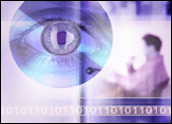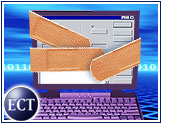
Computer Associates yesterday announced the launch of its eTrust PestPatrol Anti-Spyware r5. The new product integrates CA’s eTrust Security Management software portfolio with a revised version of the PestPatrol anti-spyware application CA acquired in an earlier buyout.
The software, with a retail price of US$39, is backed by the CA Security Advisor, which maintains an extensive online threat database and provides users with advice on how to delete malicious code and prevent further infections.
CA says the new product is meant to work in conjunction with antivirus and other security measures. “This is about complete protection of the user, the hardware, the software, the identities, and personal information and intellectual property out there,” said Sioux Fleming, Computer Associates Director, eTrust Threat Management Solutions.
“The bad guys don’t distinguish among tools; they will use whatever comes to hand. That means that real protection begins with anti-virus and continues with a personalfirewall, anti-spyware, anti-spam, privacy guards, and more,” he said.
No Conflicts
The new product has been tested extensively and has no conflicts with the security upgrade to Windows XP. Fleming does caution users with a proxy server to “configure their anti-spyware solution to retrieve anti-spyware signature updates through that server.”
Eric Howes is a spyware expert who maintains several Web sites to help Internet users protect their privacy and security, including www.spywarewarrior.com. “Often people think ant-virus programs will protect them from spyware, but they won’t,” he said. “You need to run some kind of anti-spyware software. And don’t use just one, particularly if you run one of the free versions. Always run at least two. No single anti-spyware scanner will get it all.”
That sentiment is echoed by Ken Dunham, Director of Malicious Code at iDefense, who said he recommends both Lavasoft’s Ad-Aware and Spybot to his friends and family. “We really haven’t had good comprehensive solutions to deal with these threats,” Dunham told TechNewsWorld. “Programs that have tried to do it all have not been as good as those that focused on just one area. That’s why we’re seeing so many new applications cropping up.”
Scanner Selection
Howes said there are currently more than 100 anti-spyware scanners available for download, some free, some not, and some more effective than others. “Spyware and adware are themselves complex enough to prove bewildering to most average users,” he noted.
Both Dunham and Howe point to an increased difficultly in typing the threats. “We’re seeing more and more convergence, with the lines blurring on what’s legitimate and what’s not,” Dunham said. “And you can only go so far in blocking malicious code before you begin to affect functionality. It’s all about managing the risk. We’re headed toward consolidated solutions that will allow users to choose the level of protection they want.”
Another challenge lies in the diversity of the threats and the fact that they can be so easily updated. “The malware developers are learning from the virus and the spamming field.” Dunham warned. “They’re hostile, and they’re aggressive. In the future, you can expect more difficulty in removing the threats and more costly infections.”
Stealing Identity
Fleming says CA’s Security Advisor Team has seen an alarming increase in spyware associated with identity theft. “It installs itself on a PC without users having to click on a Web site or get a search result,” she said. “Consumers don’t even know that it is happening.”
That lack of consent is not only an issue for users, but also for the Center for Democracy & Technology, said Associate Director Ari Schwartz.
“People feel disempowered. These threats are taking away their ability to effectively use their computers.” The CDT is working with the Federal Trade Commission and attorney generals throughout the U.S. to fight the growing use of spyware and other malicious code. The group also works to further consumer awareness. For more information, the CDT recommends a visit to www.getnetwise.org.

















































